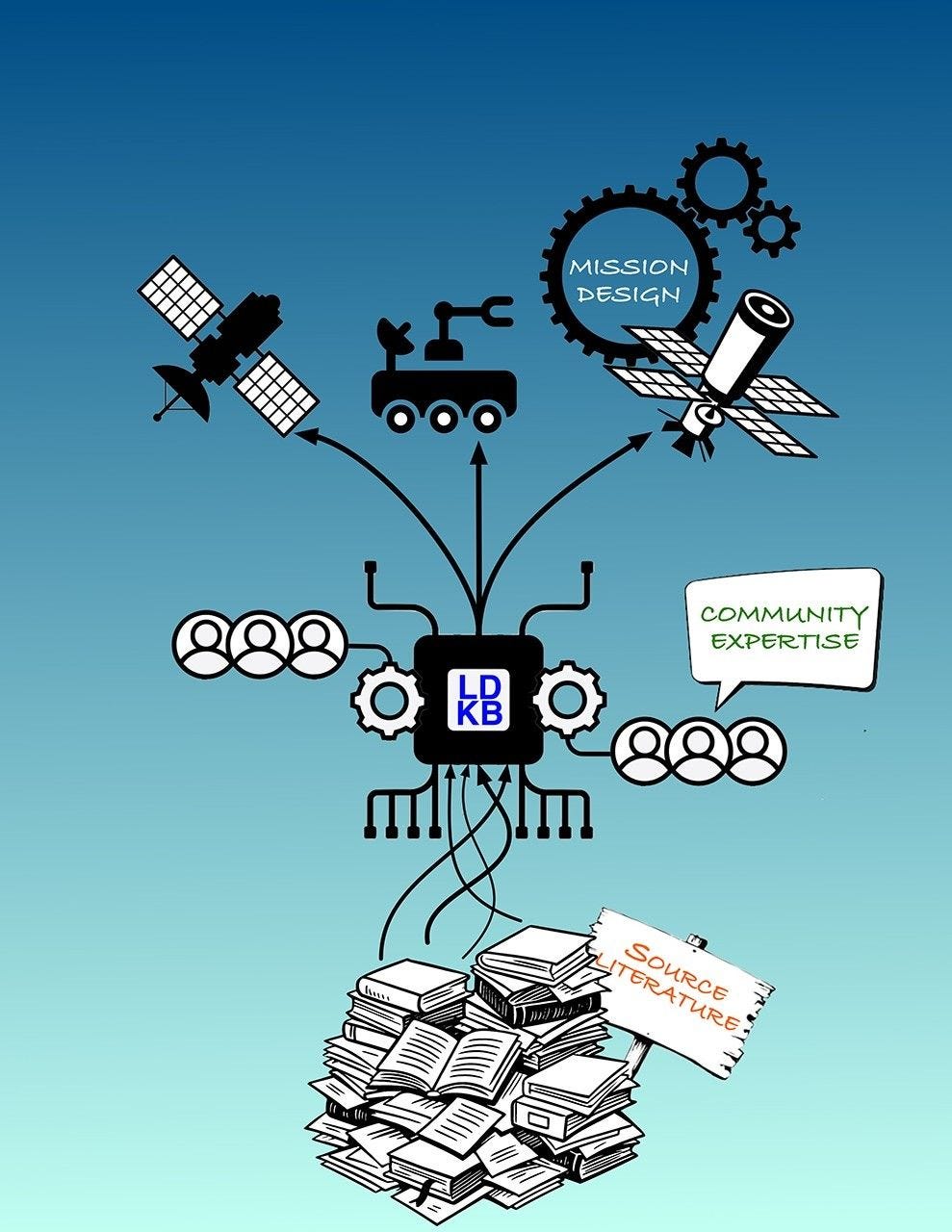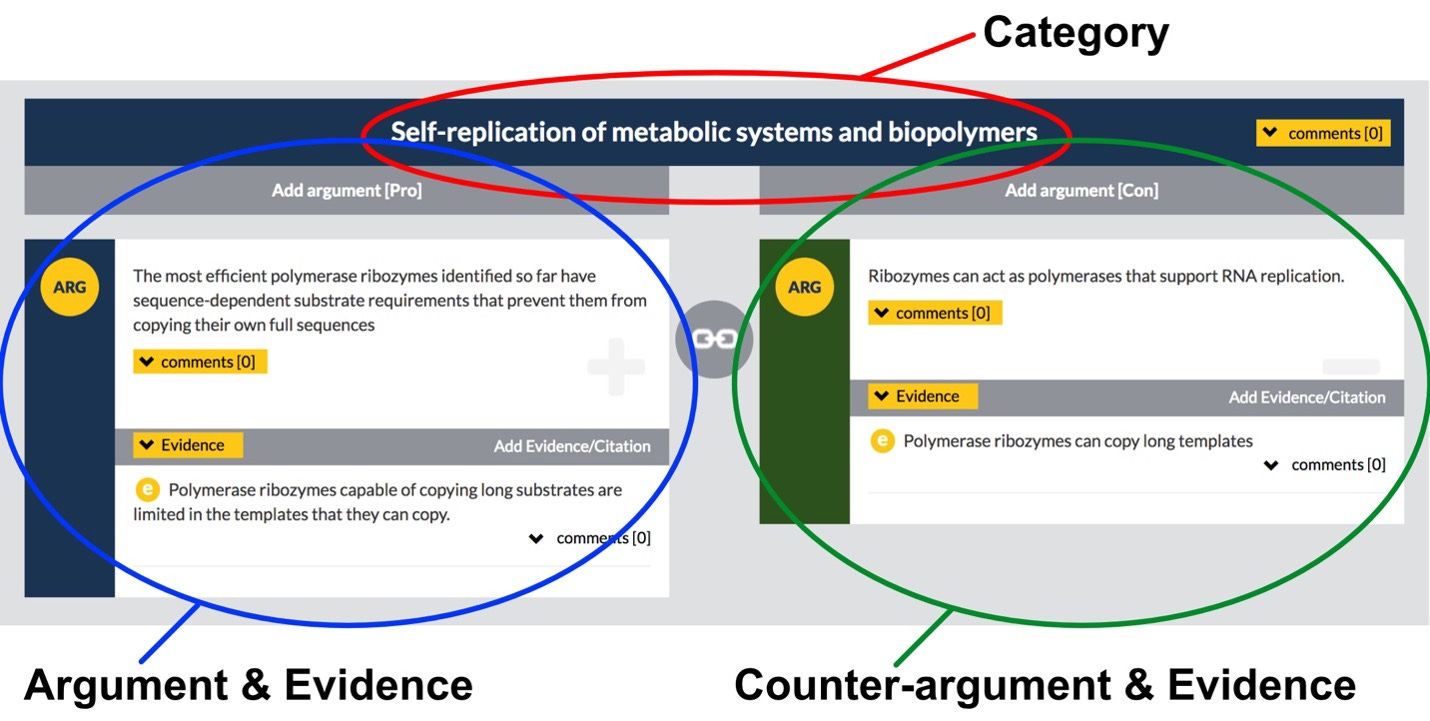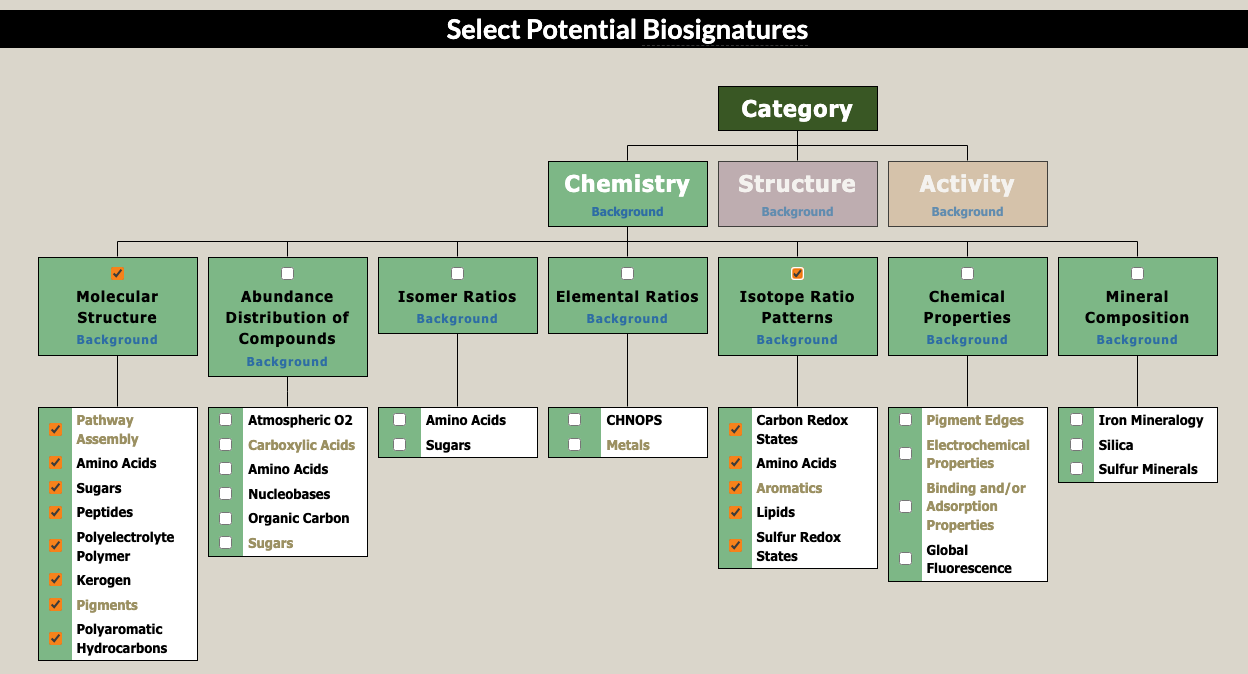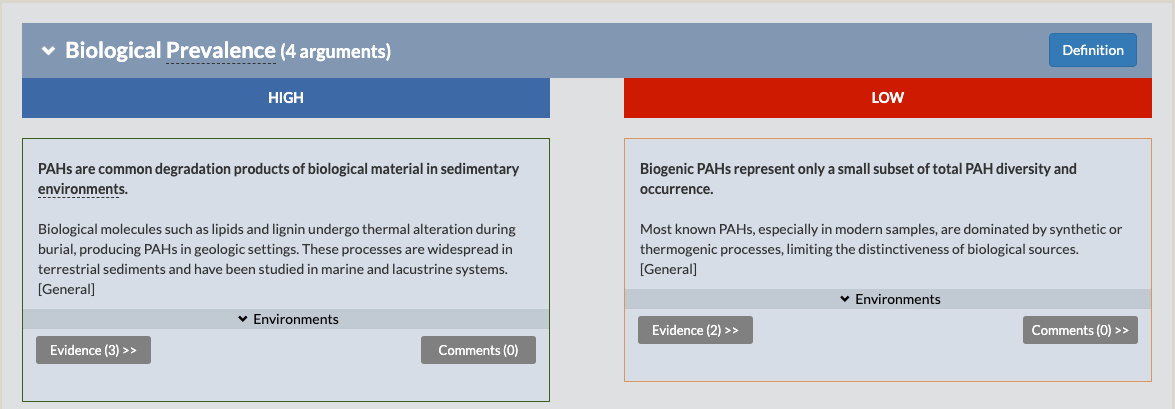The Life Detection Knowledge Base
My work with the Center for Life Detection on a tool to explore the use of potential biosignatures in the search for life beyond Earth
It’s rather staggering that we haven’t found definitive evidence for alien life yet.
While we logically have to admit based on what we know now that we could truly be alone, it seems wildly unlikely for that to be the case. There are just too many worlds out there and too many possible ways for other life to originate and evolve.
So we keep searching.
The search itself has evolved over the millennia of human history. As we’ve developed the tools of science and instrumentation that can help us to explore other worlds through telescopes and spacecraft, we’ve gotten better and better at knowing what possible signs of alien life we might find. But there are still lots of issues.
If an alien spacecraft just happens to arrive at Earth tomorrow, if we were detect sufficient evidence of a technosignature (a sign of technological activity), or we happen to spot some Martian creature walking by a camera on one of our rovers, then we could probably say with certainty that we’d made a positive life detection.
But we also know that the first signs of alien life may not be so definitive. We might have to instead interpret the geological, chemical, and physical signs available to us within a sample of material from another world or from the data we collect from instruments on a spacecraft or telescope. These potential signs of life are what we in the business of looking for aliens call “biosignatures”. A biosignature consists of the various substances, structures, patterns, and processes that indicate that life was or is present in some place. These can be things like isotopes impacted by biological activity, the abundance of certain organic molecules, the ways life interacts with the formation of sedimentary rocks, or how certain behaviors of growth or reproduction may implicate biology.
But knowing what possible signs of past or present life could be compelling enough to say we’d found possible life on Mars, Europa, or some exoplanet isn’t enough alone. We also need to know about how such possible biosignatures may form without the presence of life (abiotically), how potential biosignatures are preserved in the rock record or in atmospheres over time, and whether detection of any potential biosignature within a given setting could mean a life detection.
Figuring all of that out requires deep interdisciplinary knowledge, nuanced reasoning, and lots and lots of collaboration.
That is part of why the Center for Life Detection (CLD) developed the Life Detection Knowledge Base (LDKB).
The LDKB is an attempt at developing an evolving resource for organizing and integrating many decades of scientific thinking about biosignatures, planetary environments, and the technologies capable of detecting life. It’s a living roadmap designed to help mission planners, researchers, and students better understand how we can use potential biosignatures for life detection.
I’ve been involved in the development of this resource for quite some time now. Sadly, I’ve just recently learned that my time being funded to be part of the team is coming to an end. So, I figured why not write up a little overview of what the LDKB is intended to be, a little history of my own activity within the team, and my own thoughts on what the future of the webtool may be.
The Origins of the LDKB
The work to develop the LDKB has been ongoing for many years.
My involvement started in 2018, when my colleague and friend, Andro Rios, recommended that I join Andrew Phorille in developing a webtool called the Hypothesis Browser.
The Hypothesis Browser was intended to be a tool that people could use to explore various open scientific hypotheses by comparing arguments for and against those hypotheses. As we were building it, we tried to capture a range of fields that were relevant to understanding everything from the birth of the universe and the formation of planets to the origination and evolution of life, searching for alien life, and more.
As the original text on the website used to read:
One primary aim of scientific research is to evaluate hypotheses by collecting new information and by comparing supporting or contradicting pieces of evidence. However, many current knowledge bases for finding primary scientific literature rely on keyword and key term searches, making it difficult to search for the pieces of evidence that directly support or contradict given hypotheses. The Hypothesis Browser provides hypothesis-based indexing of primary scientific literature, making it easier to find supporting and contradicting pieces of evidence relevant to specific hypotheses. This knowledge base has been developed as an effort of the scientific community, with user contributions and the ability to question or comment on specific lines of evidence from the primary literature.
Here’s an image from the Hypothesis Browser showing how such a tool was intended to work:
The website itself had been developed by Stanisław Gliniewicz, a project manager and now rather remarkable photographer, leading a team of web developers in Poland. His team built the interface and website.
Unfortunately, the funding to support the development and maintenance of the Hypothesis Browser eventually dried up, and so the webtool slowly faded and then went offline. It used to be available at hypothesisbrowser.com, but that link just gives a 403 error now.
However, the work and time we put into developing the Hypothesis Browser also ended up being the basis for the next set of webtools. The entire structure of the Hypothesis Browser found another home when Andrew Pohorille decided along with CLD co-lead Tori Hoehler that we could use this system of supportive and counter arguments in development a knowledge base specifically for life detection: and thus the LDKB was born.
As we share about the tool on the website:
The Life Detection Knowledge Base (LDKB) of the Center for Life Detection (CLD) is an online repository of our knowledge regarding the detection of signs of life. These signs, known as biosignatures, can vary from visually observable patterns to chemically measurable phenomena and to signs of activity such as catalysis and motion. The LDKB is designed for easy browsing/searching of arguments supporting and contradicting the value of a specific potential biosignature. Arguments are built upon evidence represented within the peer-reviewed scientific literature and organized through specific criteria and relevant environments. Complemented with background sections and places for user comments, the LDKB is a comprehensive forum for the discussion and scrutiny of the scientific literature about the extent to which a potential biosignature is or is not diagnostic of living processes.
A little step back: long before I became part of the team, Andrew Pohorille was planning on a tool like this. He originally had proposed the concept of the Hypothesis Browser along with Rich Keller as a tool to be developed by Google. As I understood from Andrew, this originally had been moving forward before some of those representing NASA legally declared that working with Google on a NASA product might be seen as problematic, and the work had been scrapped for some time. Andrew had then later moved forward on the development of the webtool through internal funding from NASA, and that is how I was then brought onto the team. (Along the way, I was also invited by Tori Hoehler to become part of the origination of the Network for Life Detection (NfoLD), where I’d served along with Joey Pasterski in the initial development of the Early Career Council!).
Andrew Pohorille passed away in 2024, after a long and influential career working in the realm of Origins of Life and other fields through NASA, and it’s good to know that his work is currently living on in the LDKB.

The same structure that we used for the Hypothesis Browser fed into the development of the LDKB. Now, when you go to the tool you can browse the main categories and click on them to open up a tree of related topics. Each topic, like Molecular Structure or Isotope Ratio Patterns in the Chemistry category also then list a number of potential biosignatures that were highlighted by members of the astrobiology community to be relevant.
Within any given potential biosignature, we then have a branching tree that shows the arguments that support biological and abiotic signals for that specific feature.
Here’s one small example of a couple of arguments that support the relevancy of the biological prevalence of polyaromatic hydrocarbons (PAHs):
It’s taken quite some time, but we’ve sculpted a large number of arguments supported by various pieces of evidence for many of the entries in the database. And there’s still a lot more to do!
I won’t go into all the details of the workings of the LDKB here. Instead, I’d highly recommend checking out an overview article from NASA that was written by Svetlana Shkolyar: NASA’s Life Detection Knowledge Base: A Tool for Life Detection Mission Planning
For those who like to read scientific literature, we also just published a special collection in the journal Astrobiology that outlines the work in developing the LDKB.

One of the most rewarding parts of working on this project has been seeing early-career researchers—undergraduate interns, graduate students, and postdocs—engaging directly with the tool, adding content, learning to write clearly, and navigating scientific uncertainty.
Through both the Young Scientist Program at the Blue Marble Space Institute of Science and through collaborations with educators like Dr. Jennifer Glass at Georgia Tech, the LDKB has become a bit of a training ground for the next generation of astrobiologists.
There’s even ongoing work piloting the use of AI and large language models to help accelerate content development (though human judgment remains critical). Like all good tools in science, the LDKB will never be finished. And that’s a feature of the tool.
Looking Forward
Even as my own formal role with the Center for Life Detection wraps up, I remain deeply invested in the future of the LDKB.
I honestly would love to see the tool be further developed with a lot of support from LLMs, since something like ChatGPT or Claude could really do the heavy lifting of developing a humongous set of arguments and evidence for each entry and really scour all of the scientific literature.
Also, one thing that had been remarked upon by many of us throughout the development of the tool was the lack of the middle ground or “grey zone” in between the biological and abiotic sources and signals for many of these biosignatures. We had always intended to incorporate some form of ranking system or a probabilistic tool that could help users and experts to judge the value of specific signs and patterns that might be used in looking for signs of life. That’s another place where I think AI could help.
I encourage you to explore the LDKB yourself. Dig into a few entries. Add your expertise if you have some to offer. Share it with your students or colleagues. And most of all, keep asking the kinds of questions that remind us how much more there is to know.





Do you have any thoughts you could share on how Assembly Theory as being developed by Sara Imari Walker and Lee Cronin might impact the detection of life, whether in the LKDB or as a separate stream of inquiry?
Really appreciate these Cosmobiologist posts of yours - fascinating glimpses of the filed!